Aftir Leaving a Bread Dough in the Fridge for One Night What Shoud I Do to Make Rise Again
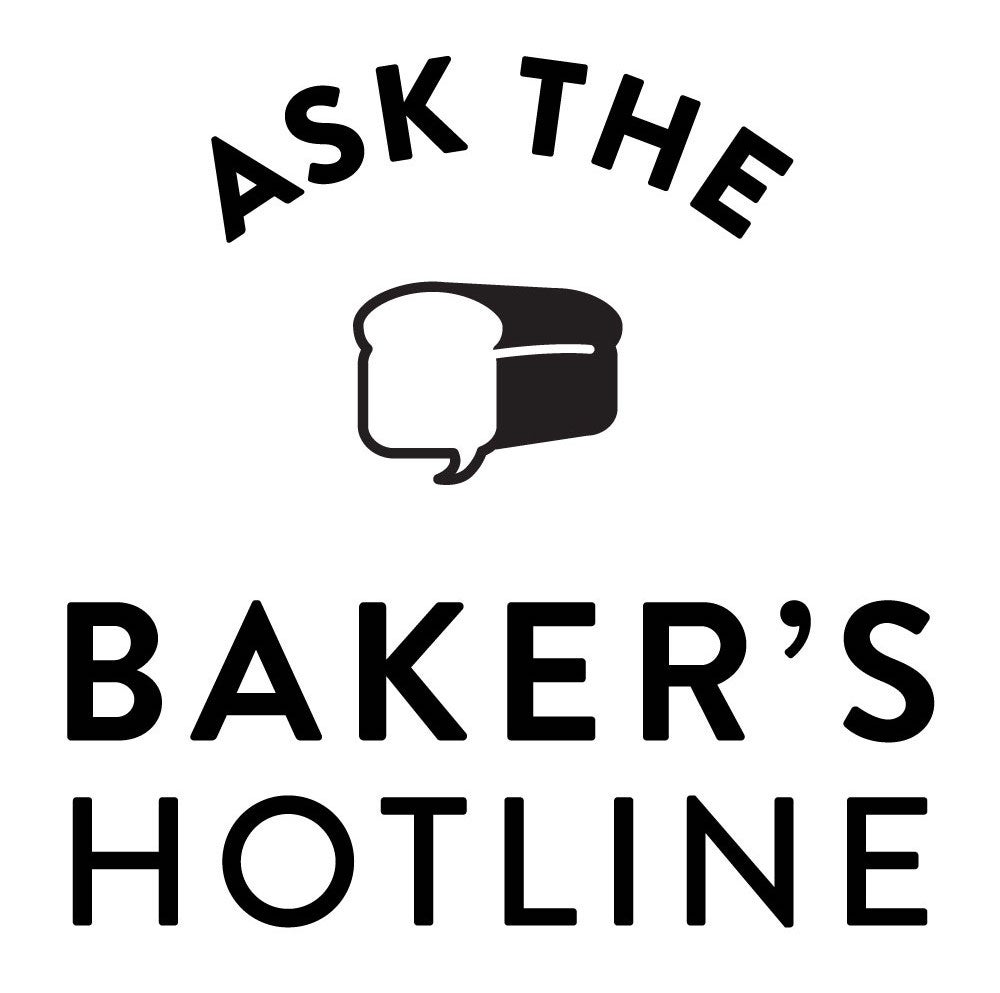 The bakers of King Arthur are here to solve the kitchen conundrums you share with u.s.a., whether it's on the telephone, computer, or by the expert old postal service. In Ask the Bakery'south Hotline, Annabelle will option the brains of the talented King Arthur Baker'due south Hotline team to tackle some of your almost-asked questions.
The bakers of King Arthur are here to solve the kitchen conundrums you share with u.s.a., whether it's on the telephone, computer, or by the expert old postal service. In Ask the Bakery'south Hotline, Annabelle will option the brains of the talented King Arthur Baker'due south Hotline team to tackle some of your almost-asked questions.
* * *
Whether you're looking to develop flavor, piece of work around a tricky schedule, or realize y'all were supposed to pick upward a friend from the airport halfway through a bread recipe, the ability to let your dough rise in the fridge is a tempting solution, and luckily happens to exist quite practical, too. In lieu of a typical ane- to 3-hour rising at room temperature, you lot'd opt for a long (viii- to 12-hour) rise in the refrigerator. This slow refrigerated rise is referred to as "cold fermentation" and has many benefits ranging from flexibility to season.
Yous can incorporate this chilly technique into simply about any bread recipe. To guide you toward the all-time results, I reached out to Clara Krueger, a fellow member of the King Arthur Baker's Hotline who's well-versed in bread blistering.
When can I air-condition my dough?
Most bread recipes accept two rises, a first rise (also called majority fermentation), and a second or final rising. You can chill your dough during either the showtime or second ascension. Your yeast won't give you much love if it's asked to do both rises in the fridge, so it's best to do i or the other at room temperature.
If opting for a cold first rise ...
For ease of storage, using the fridge for the first ascension is best if you're working with large quantities of dough. Few people have room to store a giant pan of focaccia amidst their milk, eggs, and leftovers. Instead, it's easier to chill the dough in a covered container and let the shaped focaccia rise on the counter.
Tips for successful get-go-rise refrigeration
-
"Let the dough ascension for about xx to thirty minutes on the counter before sticking it in the refrigerator," says Clara. "This lets the yeast get going before we chill everything down." This time can vary based on your recipe and environment, then utilise your judgment if your recipe is high in yeast or information technology's a warm twenty-four hours — you may not need that 20- to 30-minute wait.
-
Call up, your dough is going to grow. "P ut your dough in a covered container with plenty of room. You want the unrisen dough to fill the container almost 1/3 of the manner and so you don't end up with a dough volcano in your refrigerator." Every bit a victim of a full-on mashy Mt. Vesuvius myself, trust me, you want to remember that one!
-
Make sure your dough doesn't lose its wet. "You desire the dough to exist covered so information technology doesn't dry on the surface," says Clara. A hard crust tin prevent dough from rising to its full potential. "Dough Rising Buckets are swell for single loaves and minor batches, but my personal favorite [for double batches] is our 6-Quart Food Storage Container. " Avoid covering your dough with breathable materials like linen. Instead, apply lids or wraps that keep wet in.
Shaping staff of life loaves after kickoff-rising refrigeration
Later a cold bulk fermentation, let your dough to regain some warmth on the counter for forty to lx minutes and become slightly puffy before shaping information technology. You tin help the process along by stretching and folding the dough. For a visual of the folding procedure, check out our blog mail on majority fermentation.
Rolls are a little less high-maintenance. You tin start shaping the dough straight out of the fridge. The warmth of your hands and move of shaping volition heat upwards the smaller pieces of dough fairly quickly, so there'southward no need to perform folds or await for the dough to come to room temperature on its own.
If opting for a cold 2d ascension ...
For ease of treatment and scheduling convenience, many bakers purposefully adjust bread recipes to have their second rise in the fridge. Clara shares: "I make a lot of crusty hearth breads and sourdoughs. These benefit from an overnight fermentation (ascent) in the refrigerator to score cleanly and make the bread recipe fit around my schedule."
Tips for successful second-ascent refrigeration
-
Free-form artisan loaves may be chilled without a cover. Simply pall the edges of a floured linen over the top if you're using i. "The loaf may dry out a bit on the surface, but a bear on of dryness just makes it easier to handle. Though if yous find that your fridge maintains very low humidity, you may still want to embrace the loaf with plastic wrap or a pot lid," says Clara.
-
Sandwich loaves tin exist refrigerated too! "Shape the dough and popular it into a greased loaf pan. Employ a embrace that won't touch the dough itself only volition keep the surface moist. A shower cap or basin cover is perfect. In a pinch, y'all can lay greased plastic wrap over the dough's surface."
-
Be mindful of your dough'southward temperature. "If your dough is above fourscore°F, the refrigerator may not be able to absurd information technology downwardly before the loaf overproofs," Clara explains. "If you lot're planning on refrigerating your shaped dough, aim for a dough temperature between 75°F and 80°F." Larn more in our blog on Desired Dough Temperature.
Shaping breadstuff loaves subsequently a 2nd-ascension refrigeration
The beauty of chilling shaped loaves is that it makes them very easy to handle. Artisan loaves volition likely be bakeable correct away. Simply turn them out of their floured brotform onto or into your chosen blistering vessel, score, and bake.
Whether you've fabricated a free-form or a pan loaf, trust your eyes to decide whether it'due south ready to broil directly from the fridge or not. Clara says: "If your loaf doesn't seem to have risen or puffed at all in the refrigerator, it may benefit from an hour on the counter before baking. This is a judgment call, and the more familiar yous are with your recipe, the amend you will exist at reading your dough."
Refrigerating dough: Is it for you?
Whether you lot refrigerate your dough during the beginning or 2nd ascent, there's one thing you tin can count on: a boost in flavor. Fermentation creates organic acids that aid in strengthening your dough and lend MAJOR flavour. Don't believe me? Endeavor making two loaves of the same bread recipe. Bake 1 loaf right away and the other after an overnight rise. You'll be amazed at how much more than season the 2d loaf develops!
If you're refrigerating dough to save fourth dimension, recall carefully nigh your schedule. If you're in a rush today just have extra time tomorrow, a beginning-ascent refrigeration will fit the bill. If you have time to spare today but only a small window to broil the next, go with a 2d-rise refrigeration and so your loaf can go straight into the oven.
Got a question you'd like answered? Driblet it in the comments below, and I'll come across you lot side by side month with more than baking insights from the Rex Arthur Baker'south Hotline!
Cover photograph by Marker Weinberg.
Source: https://www.kingarthurbaking.com/blog/2021/09/28/how-to-refrigerate-bread-dough-to-bake-later#:~:text=Shaping%20bread%20loaves%20after%20first,stretching%20and%20folding%20the%20dough.
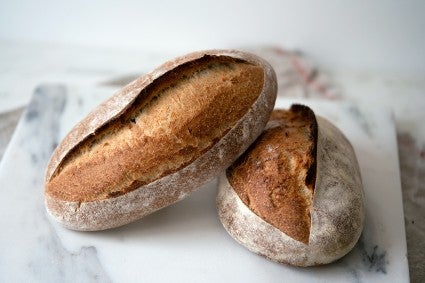
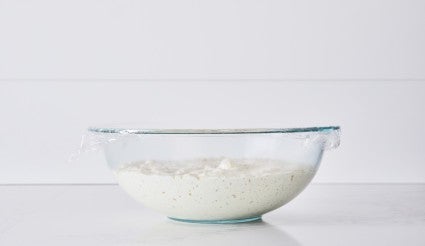
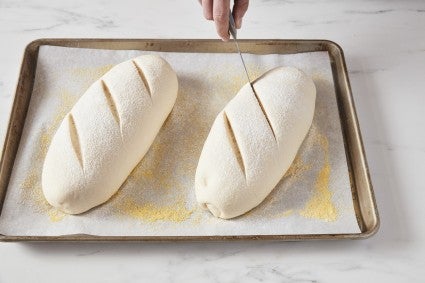
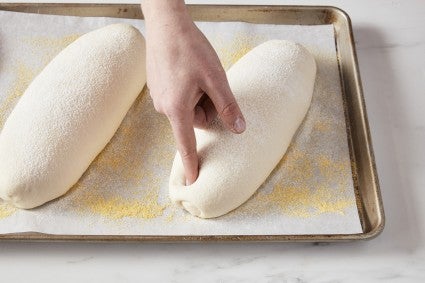
0 Response to "Aftir Leaving a Bread Dough in the Fridge for One Night What Shoud I Do to Make Rise Again"
Enregistrer un commentaire